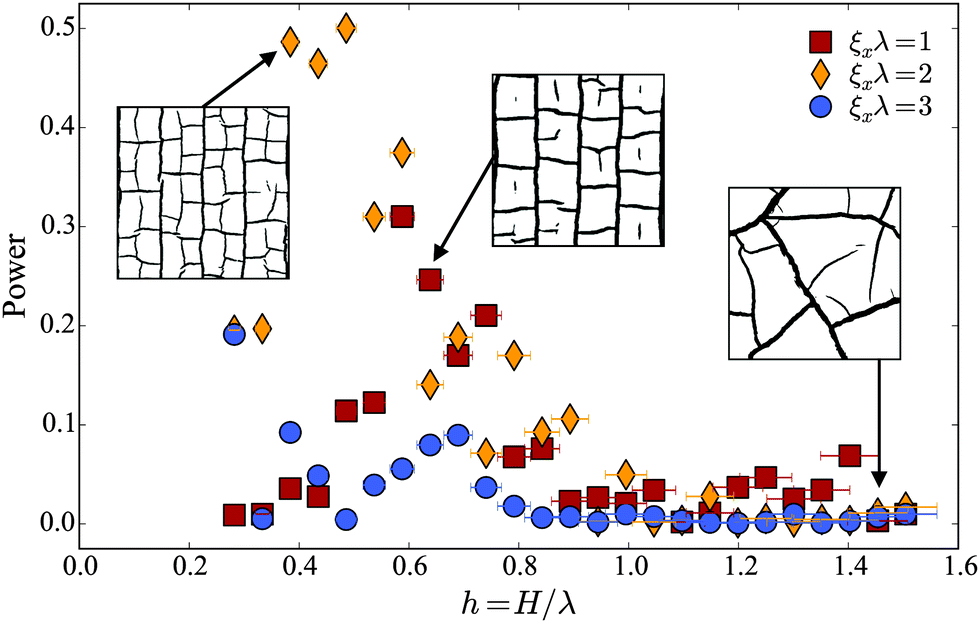G Force 1 0 0 1 Crack Erodes
Prediction and numerical simulation of droplet impact erosion on metallic structure. COUDOUEL1,2,*, A. COMBESCURE1, J.-C. LaMCoS, UMR CNRS. Cracks propagation leading to grain removal or tilting. (iii) Finally, erosion rate diminishes, possibly again becomes constant, or zero in some cases. Is a possible elevation oint C? A 75 feet 95 feet c. Four identical sand castles are shown. 1, 1 W h d castle will most 8. The diagrams below show a natural process that e ow. 0 san th k likely be eroded fastest by the wind? 29 kmlh Sand. COMPRESSION + CROSS FRICTION RumbleRoller Gator is the only foam roller optimized for cross frictional massage.


• 158 Downloads • Abstract The surface physical and chemical effects of abrasive erosion of polyurethane in three different fluids (H 2O, polyacrylamide and NaOH) containing quartz particles have been investigated respectively. The surface profiles, elements constitutions, binding energies and functional groups of polyurethane surfaces before and after abrasive eroding have been analyzed with scanning electron microscopy (SEM), X-ray photoelectron spectroscopy (XPS) and Fourier transform infrared spectrometer (FT-IR). The surface physical effects of the abrasive erosion process were found to be microcutting, high-cycle fatigue and plastic fracture. Encopy Download Music. The surface chemical effects turned out to be mechanical rupture of macromolecular chains, thermal decomposition of the allophanate groups and the biuret groups, hydrolysis of carbamate groups, and surface oxidative degradation.
An actively eroding on an field in Germany In, erosion is the action of surface processes (such as or ) that removes,, or dissolved material from one location on the, and then it away to another location. Icom Ic F25sr Software Companies. The particulate breakdown of rock or soil into is referred to as physical or mechanical erosion; this contrasts with chemical erosion, where soil or rock material is removed from an area by its dissolving into a solvent (typically water), followed by the flow away of that solution. Eroded or solutes may be transported just a few millimetres, or for thousands of kilometres. Natural rates of erosion are controlled by the action of geological weathering drivers, such as; bedrock wear in; coastal erosion by the sea and; plucking,, and scour; areal flooding; abrasion; processes; and processes in steep landscapes like and. The rates at which such processes act control how fast a surface is eroded. Typically, physical erosion proceeds fastest on steeply sloping surfaces, and rates may also be sensitive to some climatically-controlled properties including amounts of water supplied (e.g., by rain), storminess, wind speed, wave, or atmospheric temperature (especially for some ice-related processes). Are also possible between rates of erosion and the amount of eroded material that is already carried by, for example, a river or glacier.
Processes of erosion that produce sediment or solutes from a place contrast with those of, which control the arrival and emplacement of material at a new location. While erosion is a natural process, human activities have increased by 10-40 times the rate at which erosion is occurring globally.
At well-known agriculture sites such as the Appalachian Mountains, intensive farming practices have caused erosion up to 100x the speed of the natural rate of erosion in the region. Excessive (or accelerated) erosion causes both 'on-site' and 'off-site' problems. On-site impacts include decreases in and (on ), both because of loss of the nutrient-rich upper.
In some cases, the eventual end result is. Off-site effects include and of water bodies, as well as sediment-related damage to roads and houses. Water and wind erosion are the two primary causes of; combined, they are responsible for about 84% of the global extent of degraded land, making excessive erosion one of the most significant worldwide.: 2: 1,,, and are amongst the most significant human activities in regard to their effect on stimulating erosion. However, there are many practices that can curtail or limit erosion of vulnerable soils. And water being by the impact of a single., and the which may result from rainfall, produces four main types of: splash erosion, sheet erosion, rill erosion, and gully erosion.